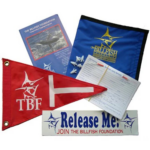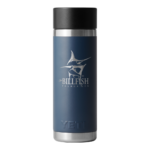THE ENORMOUS POSSIBILITIES (AND COSTS) FOR ELECTRONIC MONITORING AT SEA
As fisheries regulations develop, there is often the need for enforcement of compliance—enforcing gear restrictions, enforcing size limits, enforcing the return of non-target species, and ultimately enforcing the law. Ensuring compliance with such regulations on the high seas, however, is easier said than done. Some vessels can spend months at sea, beyond the jurisdiction of any nation, and even when vessels are within national waters their activities are so distant from land and the law that much can go unnoticed.
Observer programs attempt to shrink the room for lawlessness by employing a person to watch the day-to-day operations of a fishing vessel. The presence of an observer, employed by the government to monitor compliance and report any illegal activity, in some cases can be enough to promote the desired adherence to regulations. Other times, though, observers can be coerced so that the vessel’s illicit behavior remains under the radar.
A new strategy has been in development recently, and is becoming a viable solution. Electronic monitoring (EM) of vessels is exactly what it sounds like: technology like GPS and video take the place of an observer to record a vessel’s movements and the crew’s actions. The idea is that technology is unfazed by bribes or threats, and if the costs of not cooperating are high enough, all vessels will comply.

DIGITAL CAMERA
Much of the impetus for improving the feasibility of EM is the growing menace of illegal, unregulated and unreported fishing (IUU). Up to $23 billion of seafood makes it to the global markets each year, undermining legal fishermen and regional attempts at sustainable fisheries regulations. IUU fishing includes using trawl nets in an area where the gear is restricted, keeping fish that are below the minimum size limit, cutting the fins off sharks but returning their bodies to the sea, and entering protected areas or zones off-limits to fishing, to name a few.
An initiative to publicize the movement of fishing vessels all over the world resulted in the website Global Fishing Watch. The interactive map uses the Automatic Identification System (AIS) of commercial fishing vessels, transmitted by satellite, to show location. Originally used as a safety measure to avoid collisions and disaster, AIS is now being utilized for monitoring: if a vessel suddenly disappears from the map, or a fishing vessel is seen trespassing a protected area, or appears in the Himalayan Mountains, then something suspicious is going on.
As with observers, this technology is incomplete. Vessels may turn off their AIS, broadcast a false location, or simply not be required to use such a device. However, more and more international maritime bodies are requiring AIS for vessels, and if activity appears suspicious it may be reported.

Global Positioning System
While technology is helping to close the loopholes, it is still unclear how to ensure the global fleet of fishing vessels places cameras or GPS onboard, and how to fund it all. The unobtainable 100% observer coverage may be expensive, but cameras are also pricey, with the up front costs of setup and the long term costs of transferring video, storing the high definition footage, and paying someone to watch reels of video.
A solution must be found to refine the technology and to develop an algorithm that will allow cameras to accurately recognize particular fish—identifying yellowfin tuna, swordfish, blue marlin being pulled aboard and even in the distance—and refine this technique so that the camera captures only the activities of interest. Questions remain: would the fish have to be in the center of the frame? What about night operations with limited lighting? And can this tool or algorithm be precise enough to distinguish the confusing life stages of fish, where juveniles of one species may look like the adults of another? Despite the uncertainty, developments in EM continue as fishery management organizations and nonprofits test the technology.
At the center of this endeavor, and controversy, is the question of whether the seas need policing. Unfortunately this has become the case as too many fleets attempt to catch too few fish. Regulations are needed to protect spawning fish stocks, prevent access to sensitive ecosystems, minimize habitat damage, and maintain populations of the species we love to catch and eat. Additionally, considering the massive amount of IUU fishing taking place across the world, monitoring is needed to ensure these regulations are followed and fishery resources sustained. As technology continues to become more efficient and comparable to human capabilities, electronic monitoring may prove crucial to managing our global fisheries. The solution, however, will likely be a hybrid of technology and observers.
If you’d like to see more on this topic, consider becoming a member of The Billfish Foundation to support our work.






